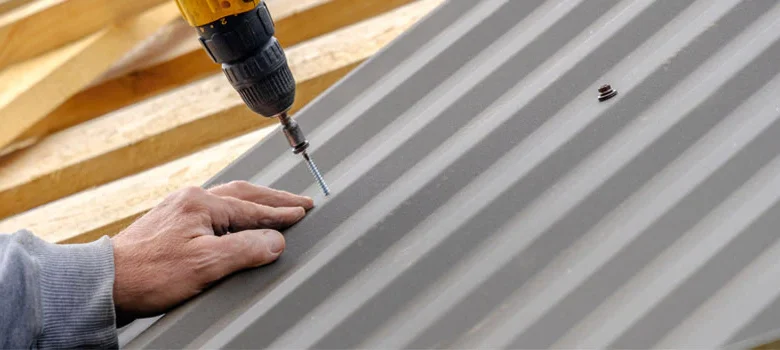
When putting on a metal roof, one small detail can make a big difference: where do you put the screws? Should they go on the rib (the raised part) or the flat (the lower part) of the metal panel?
It might seem like a simple choice, but it affects how long your roof lasts and how well it keeps water out. Let’s break it down so you can make the best choice for your home.
What Are the Rib and Flat?
Metal roofing panels are shaped with ups and downs. The rib is the high part that sticks up. The flat is the lower part in between the ribs.
You’ll need to drive screws through one of these parts to hold the metal panels in place. The question is which one is better?
Why Screw Placement Matters
Screws are what hold the metal to your roof. They go through the panel and into the wood or metal underneath. Each screw has a small rubber washer that helps keep water out.
If screws are not placed correctly, or if they are too tight or too loose, water can sneak in and cause leaks. That’s why knowing the right spot is so important.
Option 1: Screws on the Flat
Most roofing pros agree that screws should go on the flat part of the panel. Here’s why.
Benefits of Screws on the Flat
- Stronger hold: The flat part of the panel sits right against the wood or purlins underneath. That gives the screw more material to grip, making it harder for wind to pull it out.
- Better seal: Because the flat is solid and level, the rubber washer on the screw can press down evenly and make a tighter seal.
- Less bending: Screws in the flat help the panel stay in shape. Screws on the rib can sometimes bend the metal if they’re too tight.
Downsides of Screws on the Flat
- More water exposure: Water runs along the flat. If washers wear out, the flat placement might leak faster if not checked over time.
- UV damage: Washers are more exposed to the sun on the flat, which could make them wear out sooner.
Option 2: Screws on the Rib
Some roofers still put screws on the ribs, especially in certain areas or climates.
Benefits of Screws on the Rib
- Less water pooling: Because the rib is raised, screws don’t sit in puddles after it rains.
- Neater look: From the ground, screws on the rib can be harder to see, which some people like.
Downsides of Screws on the Rib
- Weaker hold: The rib doesn’t touch the roof underneath. That means screws don’t have as much to grip onto.
- Seal might not be tight: The rib curves, so the washer might not press down evenly. That can let water in over time.
- More movement: Screws on the rib can loosen as the metal expands and contracts with heat and cold.
What Do the Experts Say?
Most manufacturers recommend putting screws on the flat. They design their panels to be fastened this way. If you put screws in the wrong spot, it could even void your warranty.
It’s always smart to read the instructions that come with your roofing material. Every roof type is a little different.
Best Practices for Metal Roof Screws
No matter where the screws go, here are a few tips to help you get it right:
- Use the right screws: Only use screws made for metal roofing with a rubber washer.
- Don’t overtighten: Pressing too hard can damage the washer or bend the panel.
- Don’t over-tighten: If the screw is too loose, water can leak through.
- Keep screws straight: Screws should go in at a 90-degree angle.
- Space screws evenly: Follow the spacing pattern recommended for your panel.
Final Answer: Rib or Flat?
While both have pros and cons, the flat part of the panel is usually the better spot for screws. It gives you:
- A tighter seal
- A stronger grip
- A better chance of keeping your roof watertight for years to come
But always double-check with the panel manufacturer to be sure. When in doubt, following the instructions is the best way to get a roof that lasts.